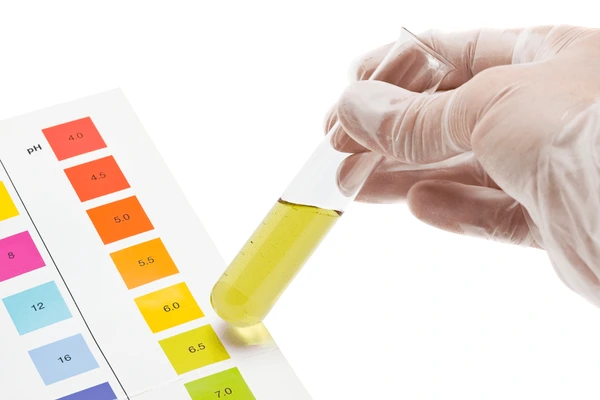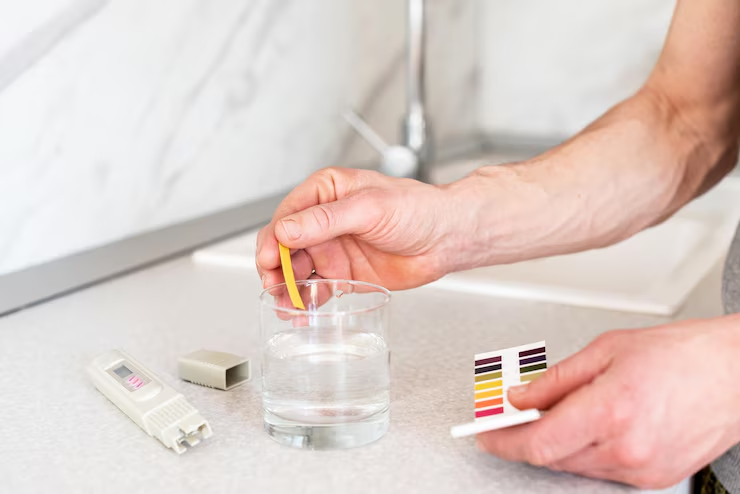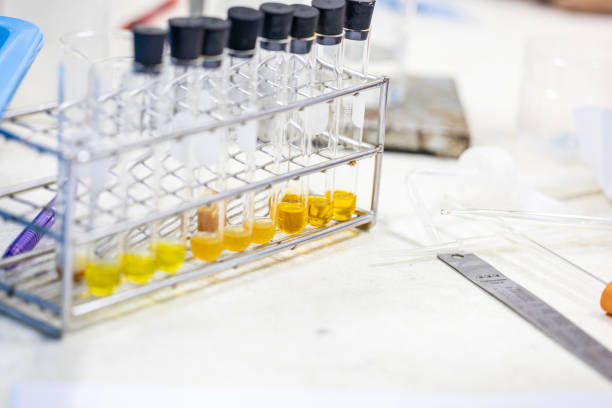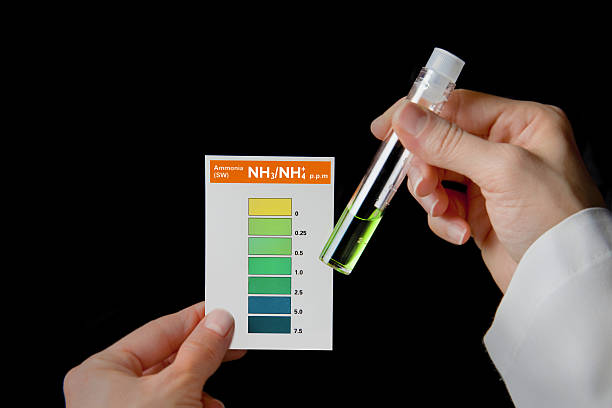Neutralization reactions are essential chemical processes where acids and bases interact to form salt and water. These reactions not only balance pH levels but also play a crucial role in industrial operations, environmental management, and biological systems. Depending on the strength and type of acid and base involved, neutralization reactions can be classified into several types. In this comprehensive guide, we break down each type of neutralization reaction with relevant chemical equations to illustrate their real-world relevance.
Introduction to Neutralization Reaction
A neutralization reaction refers to a chemical process where an acid and a base combine to produce a salt and water. This kind of reaction usually follows the formula:
Acid + Base → Salt + Water
These reactions generally release heat, making them exothermic, and their results depend on the comparative strength of the acid and base involved.
There are different types of neutralization reactions are ase follows:
1. Strong Acid + Strong Base Neutralization
Description:
This reaction occurs between a strong acid and a strong base, both of which completely dissociate in water. The resulting solution is neutral (pH 7).
Example Reaction:
HCl (hydrochloric acid) + NaOH (sodium hydroxide) → NaCl (sodium chloride) + H₂O
In this case, hydrochloric acid and sodium hydroxide fully ionize and neutralize each other to produce table salt and water.
Key Points:
- pH of the product is neutral
- Complete dissociation
- Common in acid-base titration experiments
2. Strong Acid + Weak Base Neutralization

Description:
Here, a strong acid reacts with a weak base that does not fully dissociate in solution. The result is an acidic salt solution.
Example Reaction:
HCl (hydrochloric acid) + NH₃ (ammonia) → NH₄Cl (ammonium chloride)
Ammonia, being a weak base, partially ionizes and reacts with the strong acid to form an acidic salt.
Key Points:
- The product has a pH less than 7
- Used in fertilizer and cleaning product production
- Ammonium salts are a common result
3. Weak Acid + Strong Base Neutralization
Description:
This involves a weak acid reacting with a strong base. The weak acid partially dissociates, resulting in a basic salt solution.
Example Reaction:
CH₃COOH (acetic acid) + NaOH (sodium hydroxide) → CH₃COONa (sodium acetate) + H₂O
Sodium acetate is the salt produced, and the solution is slightly basic.
Key Points:
- pH of the product is more than 7
- Important in buffer systems
- Found in food preservation and pharmaceuticals
4. Weak Acid + Weak Base Neutralization
Description:
When both the acid and the base are weak electrolytes, the extent of the reaction is minimal, and the pH of the resulting solution depends on the relative strengths (Ka and Kb) of the acid and base.
Example Reaction:
CH₃COOH (acetic acid) + NH₃ (ammonia) ⇌ CH₃COONH₄ (ammonium acetate)
The reaction reaches equilibrium, and the solution’s pH is generally close to neutral but may vary slightly.
Key Points:
- Limited dissociation of both acid and base
- The product’s pH may vary
- Useful in preparing buffer solutions
5. Acid + Metal Carbonate Neutralization

Description:
When acids react with metal carbonates, the reaction yields salt, water, and carbon dioxide gas, making it a neutralization reaction with effervescence.
Example Reaction:
H₂SO₄ (sulfuric acid) + CaCO₃ (calcium carbonate) → CaSO₄ + H₂O + CO₂
This reaction is often observed when acid rain reacts with limestone buildings.
Key Points:
- Gas (CO₂) is released
- Used in treating acidic soils
- Visible bubbling due to gas formation
6. Acid + Metal Bicarbonate Neutralization
Description:
Similar to carbonates, metal bicarbonates also neutralize acids, producing salt, water, and carbon dioxide.
Example Reaction:
HCl (hydrochloric acid) + NaHCO₃ (sodium bicarbonate) → NaCl + H₂O + CO₂
This reaction is commonly used in antacid tablets and baking.
Key Points:
- Rapid fizzing due to CO₂ gas
- Helps in neutralizing stomach acid
- Popular in food science and medicine
7. Salt Hydrolysis: A Form of Reverse Neutralization

Description:
Some salts formed during neutralization undergo hydrolysis, especially if they come from a weak acid or base. These reactions can shift the pH of the solution.
Example Reaction:
NH₄Cl + H₂O → NH₄⁺ + Cl⁻ → NH₄OH + H⁺
The salt ammonium chloride hydrolyzes to produce a slightly acidic solution.
Key Points:
- Salt interacts with water
- Alters pH due to ion reactions
- Critical in buffer and equilibrium studies
8. Biological Neutralization Reactions
Description:
Living organisms also rely on neutralization reactions to maintain internal pH balance. A classic example is in human blood buffering systems.
Example Reaction:
H⁺ + HCO₃⁻ → H₂CO₃ → CO₂ + H₂O
This reaction helps regulate pH in blood by converting strong acids to carbon dioxide and water.
Key Points:
- Essential for homeostasis
- Involves the bicarbonate buffer system
- Target of medical treatments for acidosis
Why Understanding These Reactions is Important
Mastering the types of neutralization reactions with example reactions is more than an academic exercise. It’s vital for:
- Conducting accurate laboratory titrations
- Designing effective buffer systems
- Managing environmental issues like acid rain
- Developing pharmaceutical and medical treatments
Each type of reaction brings its own chemical behavior and practical utility, reinforcing the importance of detailed chemical understanding in real-life contexts.
Conclusion
Neutralization reactions occur all around us, from the food we eat to the medications we take and even the air we breathe. By identifying and classifying the types of neutralization reactions and understanding their example reactions, we unlock insights that are crucial to chemistry, industry, medicine, and environmental science.
What is a neutralization reaction?
Neutralization reactions are essential chemical processes where acids and bases interact to form salt and water. These reactions not only balance pH levels but also play a crucial role in industrial operations, environmental management, and biological systems. Depending on the strength and type of acid and base involved, neutralization reactions can be classified into several types. In this comprehensive guide, we break down each type of neutralization reaction with relevant chemical equations to illustrate their real-world relevance.
Introduction to Neutralization Reaction
A neutralization reaction refers to a chemical process where an acid and a base combine to produce a salt and water. This kind of reaction usually follows the formula:
Acid + Base → Salt + Water
These reactions generally release heat, making them exothermic, and their results depend on the comparative strength of the acid and base involved.
There are different types of neutralization reactions are ase follows:
1. Strong Acid + Strong Base Neutralization
Description:
This reaction occurs between a strong acid and a strong base, both of which completely dissociate in water. The resulting solution is neutral (pH 7).
Example Reaction:
HCl (hydrochloric acid) + NaOH (sodium hydroxide) → NaCl (sodium chloride) + H₂O
In this case, hydrochloric acid and sodium hydroxide fully ionize and neutralize each other to produce table salt and water.
Key Points:
pH of the product is neutral
Complete dissociation
Common in acid-base titration experiments
2. Strong Acid + Weak Base Neutralization
Description:
Here, a strong acid reacts with a weak base that does not fully dissociate in solution. The result is an acidic salt solution.
Example Reaction:
HCl (hydrochloric acid) + NH₃ (ammonia) → NH₄Cl (ammonium chloride)
Ammonia, being a weak base, partially ionizes and reacts with the strong acid to form an acidic salt.
Key Points:
The product has a pH less than 7
Used in fertilizer and cleaning product production
Ammonium salts are a common result
3. Weak Acid + Strong Base Neutralization
Description:
This involves a weak acid reacting with a strong base. The weak acid partially dissociates, resulting in a basic salt solution.
Example Reaction:
CH₃COOH (acetic acid) + NaOH (sodium hydroxide) → CH₃COONa (sodium acetate) + H₂O
Sodium acetate is the salt produced, and the solution is slightly basic.
Key Points:
pH of the product is more than 7
Important in buffer systems
Found in food preservation and pharmaceuticals
4. Weak Acid + Weak Base Neutralization
Description:
When both the acid and the base are weak electrolytes, the extent of the reaction is minimal, and the pH of the resulting solution depends on the relative strengths (Ka and Kb) of the acid and base.
Example Reaction:
CH₃COOH (acetic acid) + NH₃ (ammonia) ⇌ CH₃COONH₄ (ammonium acetate)
The reaction reaches equilibrium, and the solution’s pH is generally close to neutral but may vary slightly.
Key Points:
Limited dissociation of both acid and base
The product’s pH may vary
Useful in preparing buffer solutions
5. Acid + Metal Carbonate Neutralization
Description:
When acids react with metal carbonates, the reaction yields salt, water, and carbon dioxide gas, making it a neutralization reaction with effervescence.
Example Reaction:
H₂SO₄ (sulfuric acid) + CaCO₃ (calcium carbonate) → CaSO₄ + H₂O + CO₂
This reaction is often observed when acid rain reacts with limestone buildings.
Key Points:
Gas (CO₂) is released
Used in treating acidic soils
Visible bubbling due to gas formation
6. Acid + Metal Bicarbonate Neutralization
Description:
Similar to carbonates, metal bicarbonates also neutralize acids, producing salt, water, and carbon dioxide.
Example Reaction:
HCl (hydrochloric acid) + NaHCO₃ (sodium bicarbonate) → NaCl + H₂O + CO₂
This reaction is commonly used in antacid tablets and baking.
Key Points:
Rapid fizzing due to CO₂ gas
Helps in neutralizing stomach acid
Popular in food science and medicine
7. Salt Hydrolysis: A Form of Reverse Neutralization
Description:
Some salts formed during neutralization undergo hydrolysis, especially if they come from a weak acid or base. These reactions can shift the pH of the solution.
Example Reaction:
NH₄Cl + H₂O → NH₄⁺ + Cl⁻ → NH₄OH + H⁺
The salt ammonium chloride hydrolyzes to produce a slightly acidic solution.
Key Points:
Salt interacts with water
Alters pH due to ion reactions
Critical in buffer and equilibrium studies
8. Biological Neutralization Reactions
Description:
Living organisms also rely on neutralization reactions to maintain internal pH balance. A classic example is in human blood buffering systems.
Example Reaction:
H⁺ + HCO₃⁻ → H₂CO₃ → CO₂ + H₂O
This reaction helps regulate pH in blood by converting strong acids to carbon dioxide and water.
Key Points:
Essential for homeostasis
Involves the bicarbonate buffer system
Target of medical treatments for acidosis
Why Understanding These Reactions is Important
Mastering the types of neutralization reactions with example reactions is more than an academic exercise. It’s vital for:
Conducting accurate laboratory titrations
Designing effective buffer systems
Managing environmental issues like acid rain
Developing pharmaceutical and medical treatments
Each type of reaction brings its own chemical behavior and practical utility, reinforcing the importance of detailed chemical understanding in real-life contexts.
Conclusion
Neutralization reactions occur all around us, from the food we eat to the medications we take and even the air we breathe. By identifying and classifying the types of neutralization reactions and understanding their example reactions, we unlock insights that are crucial to chemistry, industry, medicine, and environmental science.
What are the four types of neutralization reactions?
Acid + Base → Salt + Water
These reactions generally release heat, making them exothermic, and their results depend on the comparative strength of the acid and base involved.
There are different types of neutralization reactions are ase follows:
1. Strong Acid + Strong Base Neutralization
Description:
This reaction occurs between a strong acid and a strong base, both of which completely dissociate in water. The resulting solution is neutral (pH 7).
Example Reaction:
HCl (hydrochloric acid) + NaOH (sodium hydroxide) → NaCl (sodium chloride) + H₂O
In this case, hydrochloric acid and sodium hydroxide fully ionize and neutralize each other to produce table salt and water.
Key Points:
pH of the product is neutral
Complete dissociation
Common in acid-base titration experiments
There are different types of neutralization reactions are ase follows:
2. Strong Acid + Weak Base Neutralization
Description:
Here, a strong acid reacts with a weak base that does not fully dissociate in solution. The result is an acidic salt solution.
Example Reaction:
HCl (hydrochloric acid) + NH₃ (ammonia) → NH₄Cl (ammonium chloride)
Ammonia, being a weak base, partially ionizes and reacts with the strong acid to form an acidic salt.
Key Points:
The product has a pH less than 7
Used in fertilizer and cleaning product production
Ammonium salts are a common result
There are different types of neutralization reactions are ase follows:
3. Weak Acid + Strong Base Neutralization
Description:
This involves a weak acid reacting with a strong base. The weak acid partially dissociates, resulting in a basic salt solution.
Example Reaction:
CH₃COOH (acetic acid) + NaOH (sodium hydroxide) → CH₃COONa (sodium acetate) + H₂O
Sodium acetate is the salt produced, and the solution is slightly basic.
There are different types of neutralization reactions are ase follows:
Key Points:
pH of the product is more than 7
Important in buffer systems
Found in food preservation and pharmaceuticals
4. Weak Acid + Weak Base Neutralization
Description:
When both the acid and the base are weak electrolytes, the extent of the reaction is minimal, and the pH of the resulting solution depends on the relative strengths (Ka and Kb) of the acid and base.
Example Reaction:
CH₃COOH (acetic acid) + NH₃ (ammonia) ⇌ CH₃COONH₄ (ammonium acetate)
The reaction reaches equilibrium, and the solution’s pH is generally close to neutral but may vary slightly.
Key Points:
Limited dissociation of both acid and base
The product’s pH may vary
Useful in preparing buffer solutions
What are the different types of neutralization theory?
Introduction to Neutralization Reaction
A neutralization reaction refers to a chemical process where an acid and a base combine to produce a salt and water. This kind of reaction usually follows the formula:
Acid + Base → Salt + Water
These reactions generally release heat, making them exothermic, and their results depend on the comparative strength of the acid and base involved.
There are different types of neutralization reactions are ase follows:
1. Strong Acid + Strong Base Neutralization
Description:
This reaction occurs between a strong acid and a strong base, both of which completely dissociate in water. The resulting solution is neutral (pH 7).
Example Reaction:
HCl (hydrochloric acid) + NaOH (sodium hydroxide) → NaCl (sodium chloride) + H₂O
In this case, hydrochloric acid and sodium hydroxide fully ionize and neutralize each other to produce table salt and water.
Key Points:
pH of the product is neutral
Complete dissociation
Common in acid-base titration experiments
2. Strong Acid + Weak Base Neutralization
Description: Types of neutralization reactions
Here, a strong acid reacts with a weak base that does not fully dissociate in solution. The result is an acidic salt solution.
Example Reaction:
HCl (hydrochloric acid) + NH₃ (ammonia) → NH₄Cl (ammonium chloride)
Ammonia, being a weak base, partially ionizes and reacts with the strong acid to form an acidic salt.
Key Points:
The product has a pH less than 7
Used in fertilizer and cleaning product production
Ammonium salts are a common result
3. Weak Acid + Strong Base Neutralization
Description: Types of neutralization reactions
This involves a weak acid reacting with a strong base. The weak acid partially dissociates, resulting in a basic salt solution.
Example Reaction: Types of neutralization reactions
CH₃COOH (acetic acid) + NaOH (sodium hydroxide) → CH₃COONa (sodium acetate) + H₂O
Sodium acetate is the salt produced, and the solution is slightly basic.
Key Points: v
pH of the product is more than 7
Important in buffer systems
Found in food preservation and pharmaceuticals
4. Weak Acid + Weak Base Neutralization
Description: Types of neutralization reactions
When both the acid and the base are weak electrolytes, the extent of the reaction is minimal, and the pH of the resulting solution depends on the relative strengths (Ka and Kb) of the acid and base.
Example Reaction:
CH₃COOH (acetic acid) + NH₃ (ammonia) ⇌ CH₃COONH₄ (ammonium acetate)
The reaction reaches equilibrium, and the solution’s pH is generally close to neutral but may vary slightly.
Key Points: Types of neutralization reactions
Limited dissociation of both acid and base
The product’s pH may vary
Useful in preparing buffer solutions
5. Acid + Metal Carbonate Neutralization
Description: Types of neutralization reactions
When acids react with metal carbonates, the reaction yields salt, water, and carbon dioxide gas, making it a neutralization reaction with effervescence.
Example Reaction: Types of neutralization reactions
H₂SO₄ (sulfuric acid) + CaCO₃ (calcium carbonate) → CaSO₄ + H₂O + CO₂
This reaction is often observed when acid rain reacts with limestone buildings.
Key Points: Types of neutralization reactions
Gas (CO₂) is released
Used in treating acidic soils
Visible bubbling due to gas formation
6. Acid + Metal Bicarbonate Neutralization
Description: Types of neutralization reactions
Similar to carbonates, metal bicarbonates also neutralize acids, producing salt, water, and carbon dioxide.
Example Reaction: Types of Neutralization Reactions
HCl (hydrochloric acid) + NaHCO₃ (sodium bicarbonate) → NaCl + H₂O + CO₂
This reaction is commonly used in antacid tablets and baking.
Key Points: Types of neutralization reactions
Rapid fizzing due to CO₂ gas
Helps in neutralizing stomach acid
Popular in food science and medicine
7. Salt Hydrolysis: A Form of Reverse Neutralization
Description: Types of neutralization reactions
Some salts formed during neutralization undergo hydrolysis, especially if they come from a weak acid or base. These reactions can shift the pH of the solution.
Example Reaction: Types of neutralization reactions
NH₄Cl + H₂O → NH₄⁺ + Cl⁻ → NH₄OH + H⁺
The salt ammonium chloride hydrolyzes to produce a slightly acidic solution.
Key Points: Types of neutralization reactions
Salt interacts with water
Alters pH due to ion reactions
Critical in buffer and equilibrium studies
8. Biological Neutralization Reactions
Description: Types of neutralization reactions
Living organisms also rely on neutralization reactions to maintain internal pH balance. A classic example is in human blood buffering systems.
Example Reaction: Types of Neutralization Reactions
H⁺ + HCO₃⁻ → H₂CO₃ → CO₂ + H₂O
This reaction helps regulate pH in blood by converting strong acids to carbon dioxide and water.
Key Points: Types of neutralization reactions
Essential for homeostasis
Involves the bicarbonate buffer system
Target of medical treatments for acidosis
Why Understanding These Reactions is Important
Mastering the types of neutralization reactions with example reactions is more than an academic exercise. It’s vital for: Types of neutralization reactions
Conducting accurate laboratory titrations
Designing effective buffer systems
Managing environmental issues like acid rain
Developing pharmaceutical and medical treatments
Each type of reaction brings its own chemical behavior and practical utility, reinforcing the importance of detailed chemical understanding in real-life contexts.
Conclusion
Neutralization reactions occur all around us, from the food we eat to the medications we take and even the air we breathe. By identifying and classifying the types of neutralization reactions and understanding their example reactions, we unlock insights that are crucial to chemistry, industry, medicine, and environmental science.
